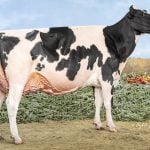Livestock, and in particular the gaseous emanations of dairy and beef cattle, have been an easy target for consumers looking for culprits behind climate change.
“Cattle produce enteric methane from the process of rumination,” said Cameron Olson, a Farm Animal Technical Consultant with Elanco™ with a focus on livestock sustainability.
Olson, who grew up on a small cow-calf operation just south of Calgary, understands beef production and the progress the cattle sector continues to make in mitigating greenhouse gas emissions.
Canada’s beef producers have a strong tradition of stewardship both of the sensitive lands and the animals under their care. Ten years ago, the industry created the Canadian Roundtable for Sustainable Beef (CRSB), bringing together voices from every point of the value chain from gate to plate. The aim is for producers to work together with partners throughout the industry for continuous improvement.
In its 2024 National Beef Sustainability Assessment, the CRSB found that the beef industry has reduced greenhouse gas (GHG) emission intensity by 15 per cent per kg of boneless beef consumed in the last decade. This sets the industry well on its way to achieving the 33 per cent GHG reduction goal set for 2030, just six years away.
Reducing emissions at the source
Elanco, a member of the CRSB, is committed to supporting producers by improving the efficiency and sustainability of their customers’ farms, ranches and feedlots. The company has developed Experior® – the first Health Canada-approved product with an environmental claim in beef production.
Approved in 2019, it is labelled to reduce ammonia gas emissions from an animal or its waste. Experior is a beta-antagonist. It is added during the last stages of the feeding program for anywhere between 28 and 63 days.
Although a nitrogen balance study has not yet been completed, Experior’s innovative mode of action allows for additional nitrogen to be retained by the animal, decreasing volumes being excreted into the atmosphere.¹
Clinical research studies show that when Experior is fed at the approved doses and duration, ammonia gas emissions from the animal are reduced by an estimated 13 to 16 per cent².
Sustainability and sound environmental stewardship are laudable goals on their own, but raising livestock is a business. As such, producers must also focus on factors such as feed conversion efficiency and maintaining the highest quality product.
Getting paid for good stewardship
Beef producers have been stewards of the land and animal health without much recognition or compensation for the benefi ts to the environment. Elanco is helping connect cattle feeders with the Alberta Off set Emissions System to provide opportunities for feedlots to be paid for their efforts.
“UpLook™ is a tool feedlot producers can use to access the Alberta Carbon Off set System,” Olson said. “It is designed to support value creation through environmental stewardship and sustainability.”
Producers develop a baseline of three years retroactively, looking at the last three full calendar years from the current year. That is their baseline period. From there, they are eligible to go forward for seven to 10 years, comparing each year to the baseline. The baseline does not move.
If carbon emissions per kilogram of beef produced are reduced, the resulting credits can be sold on the market. The government facilitates that market, but they aren’t involved in buying the credits. In Alberta, most of the credits generated out of that system have been sold to oil and gas companies to off set their emissions above the government-mandated emissions cap.
UpLook calculates the baseline and then compares the operation’s annual emissions, provides third-party verifi cation and facilitates the sale of the credits. The service also provides insights producers can consider for improving sustainability and resource stewardship, further creating value.
Carbon market prices are constantly changing, but the best estimate as of March 2024 is about 0.1 credit per head per year. If prices are about $80 per tonne, that comes to about $8 per head, which is on top of the returns from better feed efficiency that producers should also be seeing.
¹ Kube JC Translational animal science 2021 1 (v1.0). McAtee TB Translational animal science 2023 txae031 (v1.0)
² FDA Approves Experior for Reduction of Ammonia Gas. Released from Beef Cattle Waste FDA Approves E (v1.0)










